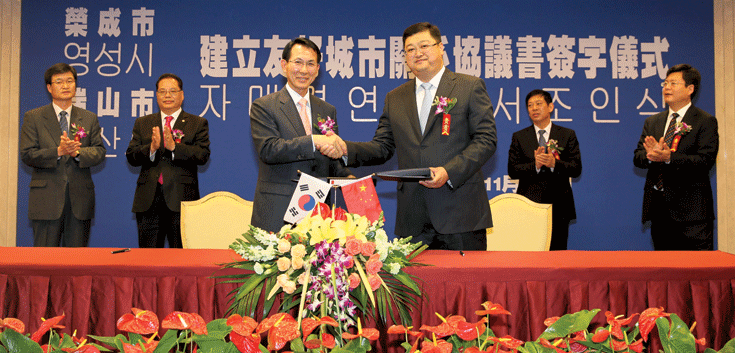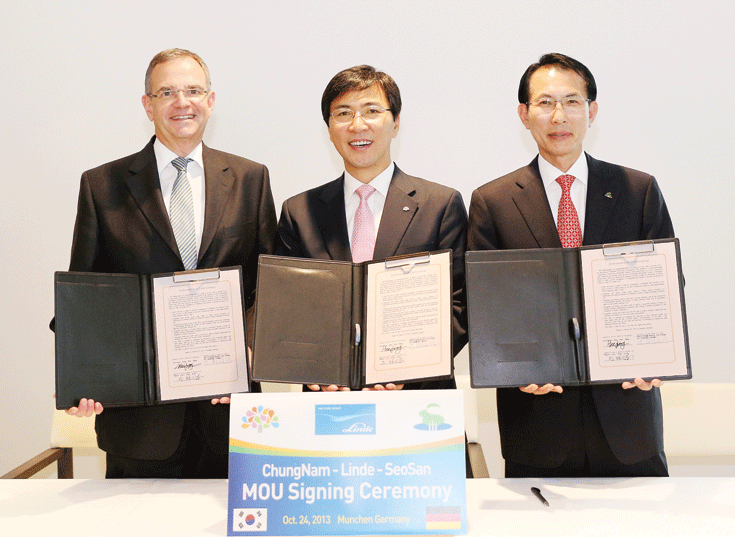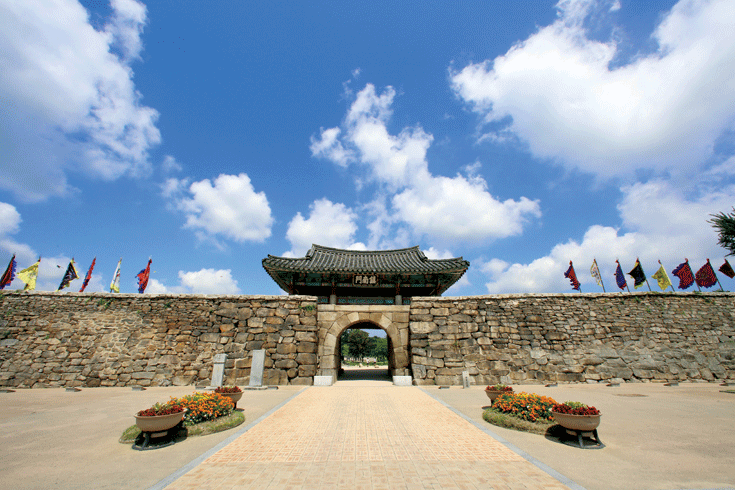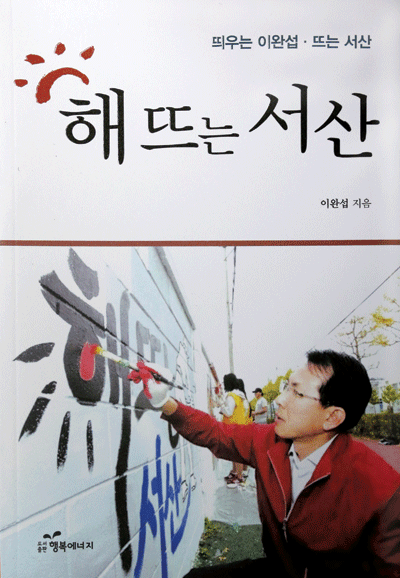As hub of Pan Yellow Sea Economic Zone
Seosan, located in South Chungcheong Province, is a dynamic city with a vibrant economy. “As the gateway to the new administrative capital of Sejong and central city of the Yellow Sea, Seosan is moving ahead every day,” said Mayor Lee Wan-seop. “In essence, Seosan is a Sun Rising City which remains committed to making its citizens happier,” he said in an interview with the Korea Post.

In 2013, the construction of the Seosan Auto Valley complex wrapped up. Already, 22 enterprises have set up plants in the complex, which provides more than 10,000 people with new job opportunities. In addition, the Auto Valley has drawn investments worth of US$200 million from German and other foreign firms.

In an effort to better serve its residents, the municipal government stays focused on the execution of “5S” administration: “Smile, soft, simple, speed and smart.” “It is necessary for us to pursue this administrative initiative to get Seosan to move ahead and ensure that citizens enjoy a better future,” said Mayor Lee.
Of note, Seosan’s “globalization” efforts are in full gear. A ferry service is due to be launched between Seosan’s Daesan Port to Longyan Port in Rongcheong City, China, next year. With the launching of the ferry service to China, Seosan is eager to promote the city’s cultural heritage among Chinese tourists. “Our hope is to develop Seosan into an international tourist city,” said Mayor Lee. He added that plans have been prepared to attract Chinese tourists and develop a range of tourist products. He said a decent hotel will be built along with an international passenger terminal at Daesan Port.

Located in south-central Korean Peninsula, the Daesan Port warrants special attention for its rapidly-increasing trade volume with China. In addition to its proximity to major Chinese ports such as Shanghai and Qingdao, The Daesan Port boasts deep water able to accommodate ships of up to 300,000-ton in size, a blessing of nature not possessed by other ports in Korea's shallow west coast.

The port is also supported by great industrial infrastructure, including Korea's largest national reserve complex and the Daesan Seaside Industry Complex. Automobile parts, petrochemical products and metal products are also manufactured in the Seosan Industrial Complex One and Two, and nearby provincial facilities.
Mayor Lee noted that it will take only five hours to reach Longyan Port from Daesan Port aboard a high-speed ferry. It will be the shortest distance (339km) among the 14 ferry routes between Korea and China, he said. By the early 2015, he said, the Daesan Port promises to become an international trade port in which passengers and logistics coexist. “Seosan will grow into a real global logistical city when an international ferry service is launched alongside the containership lines,” said Mayor Lee.

Seosan is also gaining attention as a “creator of new growth drivers” as the West Cost has emerged as a front-line logistic hub for trade with China. The city has built and is building a number of industrial estates which accommodate plants of major enterprises, such as Hyundai Oil Bank and Samsung Total Petrochemicals.
Attributable to its geographical advantages, Seosan is also becoming known as an automobile cluster. The Seosan Auto Valley complex accommodates production facilities of major automobile-related companies including Hyundai Wia, Powertech, Hyundai-Dymos, Partecs and Donghee Auto. Of particular note, Hyundai Wia has announced plans to invest 600 billion won to construct an auto parts plant in the Auto Valley by 2016. Gradually, the company is planning to increase its investment there to 2 trillion won by 2020.

As of now, more than 300 enterprises operate plants in Seosan’s industrial parks, of which some 100 firms register over 5 billion won of revenues each a year. “Seosan is a perfect place to do business due to its easy access to a seaport adjacent to China and well-established logistics infrastructure,?stressed Mayor Lee. "We will continue our efforts to attract investment from large companies and promising companies for generating employment and revitalizing the regional economy."
Reflecting the new wealth of Seosan, high-rise apartments are going up in the city alongside with shopping malls, schools and hospitals. Per capita GDRP in Seosan totaled US$37,965 in 2009, according to official government figures
The municipality is also seeking to build an expressway linking Seosan and Daejeon cities to help facilitate logistic flows of enterprises accommodated there. “It is fervently hoped that the expressway will become a reality as soon as possible,” he said. The proposed 24.3-km expressway is being promoted as a national development project. “We have made enormous efforts to see our dream come true, but it is sad that the construction work is yet to be kicked off due to the reason of budget limits,” said Mayor Lee.

